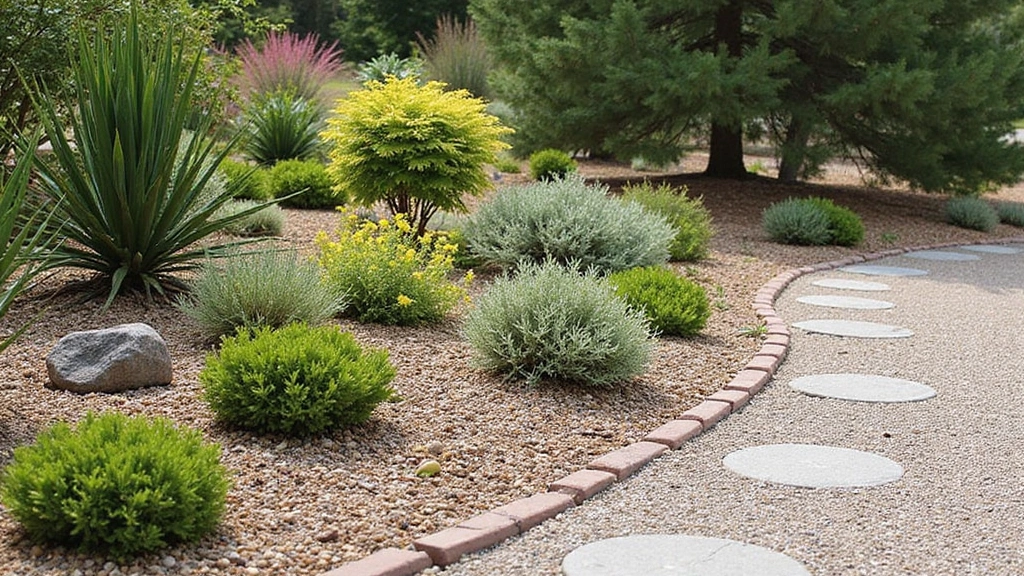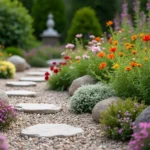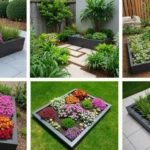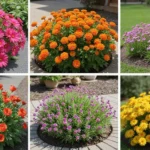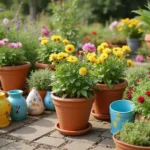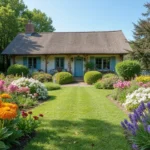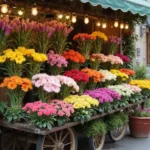Creating a stunning garden doesn’t have to mean endless hours of upkeep. Gravel flower beds are the perfect solution for low maintenance gardening enthusiasts who also want to showcase beautiful blooms.
These versatile flower beds allow for a range of drought-resistant plants to thrive, all while providing an aesthetically pleasing landscape. Whether you live in a dry climate or simply want to save on water, gravel flower beds can be designed to be both functional and visually arresting. With decorative gravel options to suit any style, you can create an outdoor oasis that compliments your home and requires minimal care.
Let’s explore 30+ gravel flower bed ideas that blend beauty and practicality, ensuring your garden remains a vibrant and welcoming space without the usual demands of traditional gardening.
Get ready to dig into some fabulous designs that can transform your yard into a low-maintenance paradise!
1. Desert Oasis
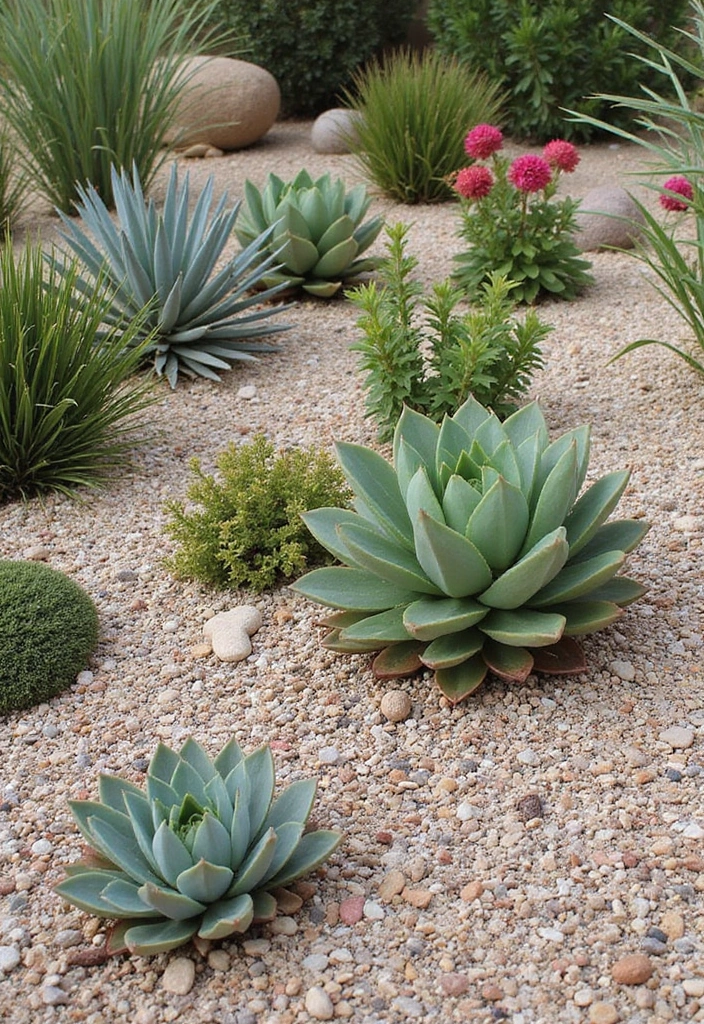
Transform your garden into a serene desert oasis with a mix of succulents and ornamental grasses nestled in decorative gravel. This design features agave, aloe vera, and blue fescue that thrive with minimal water.
To create this look, layer larger gravel at the base and top with smaller pebbles for a polished finish. Consider using a mix of colors like white and terracotta to make the greens pop.
– Plant Selection: Choose plants such as yucca, sedum, and red yucca that are not only drought-resistant but also visually striking.
– Maintenance Tips: Water only during extreme drought and remove any debris promptly.
– Aesthetic Add-Ons: Incorporate large boulders or driftwood for an added natural touch.
This design is not just gorgeous; it effectively illustrates how gravel can serve as a beautiful canvas for your plants.
2. Rock and Roll: A Bold Approach
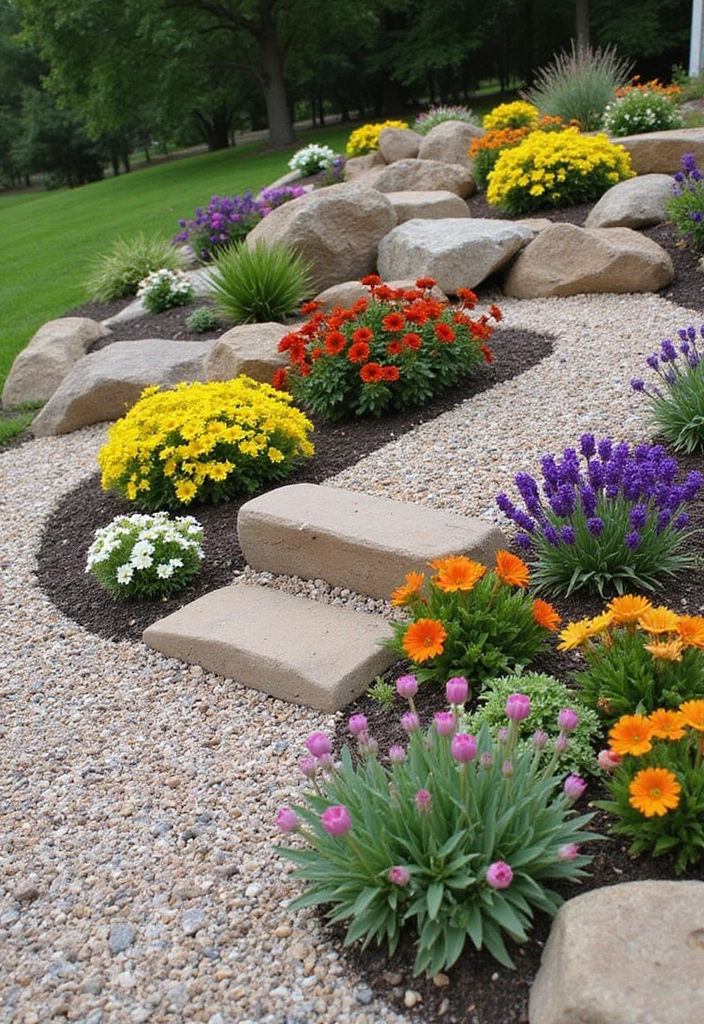
For those looking to make a statement, a rock and roll themed gravel flower bed combines large boulders with vibrant flowers. Use larger rocks as focal points while planting colorful drought-resistant flowers like lavender, zinnia, and coreopsis in between.
– Color Contrast: The combination of grey rocks and bright flower colors creates a stunning visual contrast.
– Plant Grouping: Cluster plants together for a fuller look and to create a wildflower effect.
– Soil Consideration: Ensure rocks are placed on a weed barrier fabric to prevent unwanted growth.
– Texture Variety: Add in smaller pebbles around the base to create a multi-dimensional feel.
This setup is not only striking but very easy to care for, as the rocks help retain moisture while the plants thrive in the sun.
3. Cottage Garden Charm
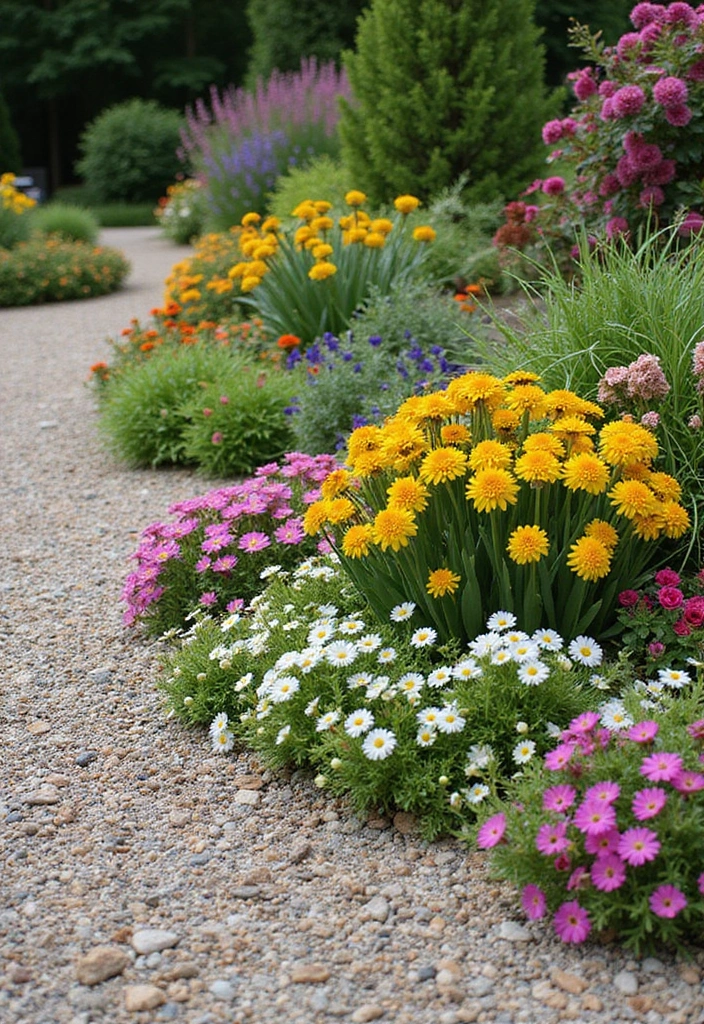
Bring a touch of old-world charm to your garden with a cottage-style gravel flower bed. This design features a mix of perennial flowers like echinacea, black-eyed Susan, and salvia planted among a base of decorative gravel.
– Planting Tips: Arrange plants in groups for a more natural look, mimicking how flowers grow in nature.
– Soil Preparation: Ensure good drainage by adding a layer of sand under the gravel.
– Color Palette: Use a variety of colors and heights to create visual interest, mixing purples, yellows, and whites.
– Wildflower Additions: Consider adding wildflowers for a whimsical touch.
This design allows for a beautiful and low-maintenance flowering area that blooms throughout the season and invites pollinators to your garden.
4. Minimalist Zen Garden
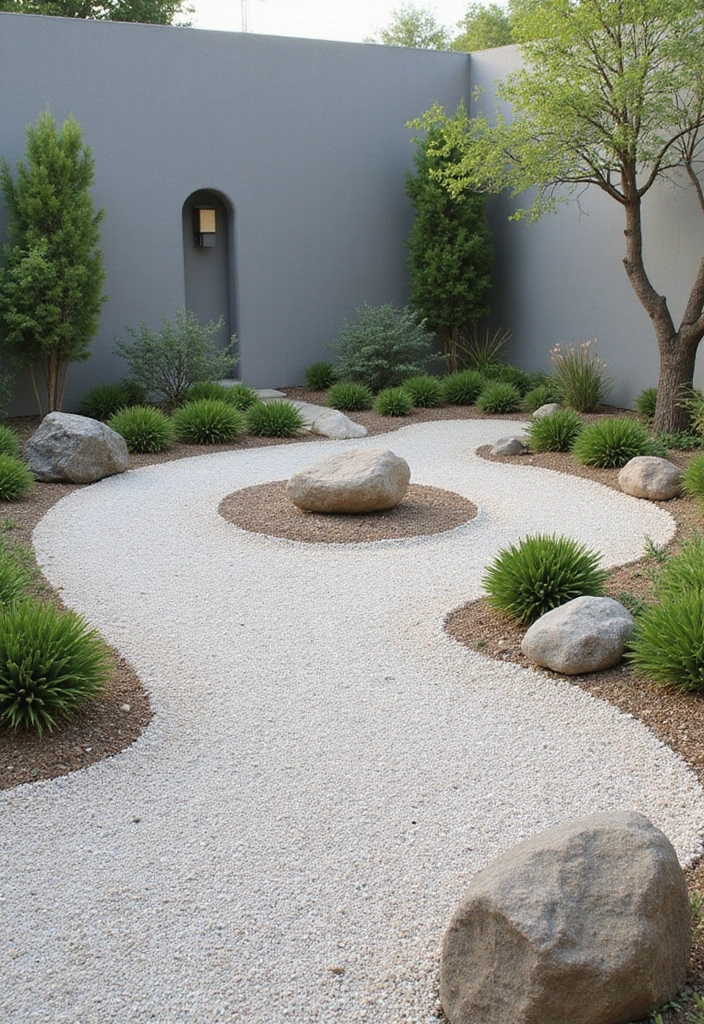
Embrace simplicity with a minimalist Zen garden featuring smooth gravel and strategically placed drought-resistant plants. This design prioritizes calmness and tranquility, using plants like Japanese sedge and fountain grass for a serene atmosphere.
– Gravel Selection: Choose fine gravel for a sleek look that resembles sand, promoting a peaceful vibe.
– Plant Arrangement: Arrange plants in clusters with ample open space between to emphasize a clean design.
– Maintenance Routine: Rake the gravel regularly to maintain its pristine look, while keeping plants weeded and trimmed.
– Accent Features: Consider adding a small stone lantern or bamboo fountain for an extra Zen touch.
The minimalist approach is not just visually appealing but also requires minimal upkeep, making it ideal for anyone seeking serenity in their gardening.
In a world of chaos, a minimalist Zen garden can be your oasis. Embrace simplicity with gravel and drought-resistant plants for a serene retreat right in your backyard!
5. Bold Color Blocks
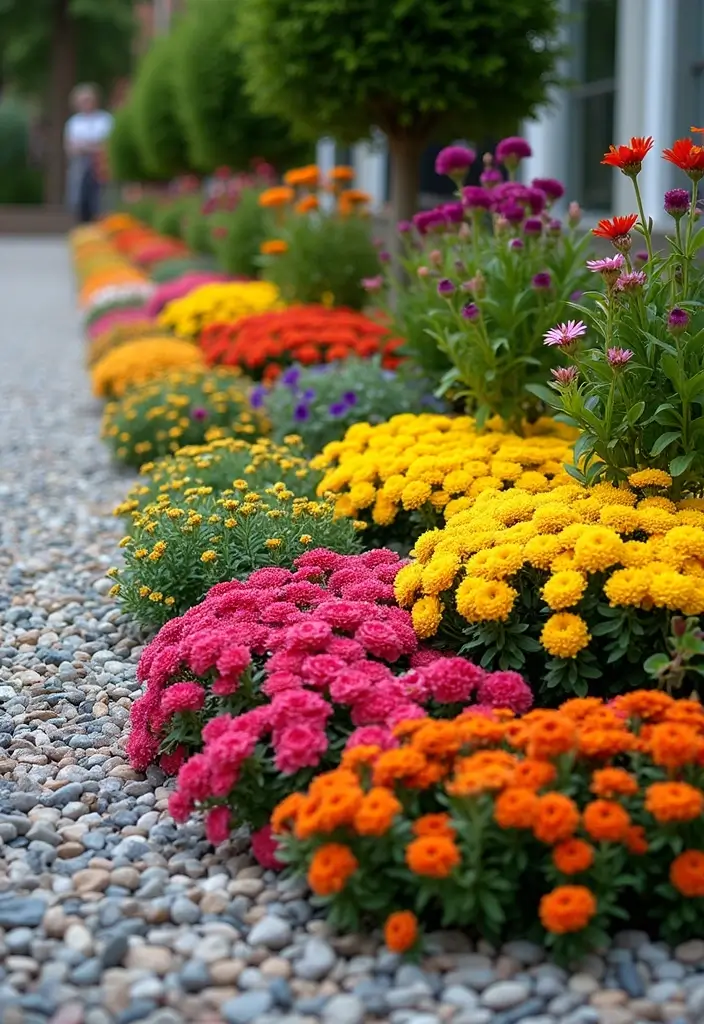
Using a bold color-blocking approach can bring a modern twist to your gravel flower bed. Select clusters of flowers in bright, contrasting colors like red, yellow, and blue to create eye-catching sections.
– Plant Choices: Incorporate drought-resistant flowers such as marigolds, daylilies, and yarrow that can withstand heat and dryness.
– Gravel Options: Use colored gravel to match or complement your flower choices, providing a cohesive look.
– Layout Design: Consider a zigzag or spiral layout for added interest.
– Seasonal Changes: As flowers bloom at different times, you can plan for a continually changing visual experience.
This approach is perfect for those who love vibrant gardens that require minimal maintenance but provide maximum impact.
6. Rustic Dry Creek Bed
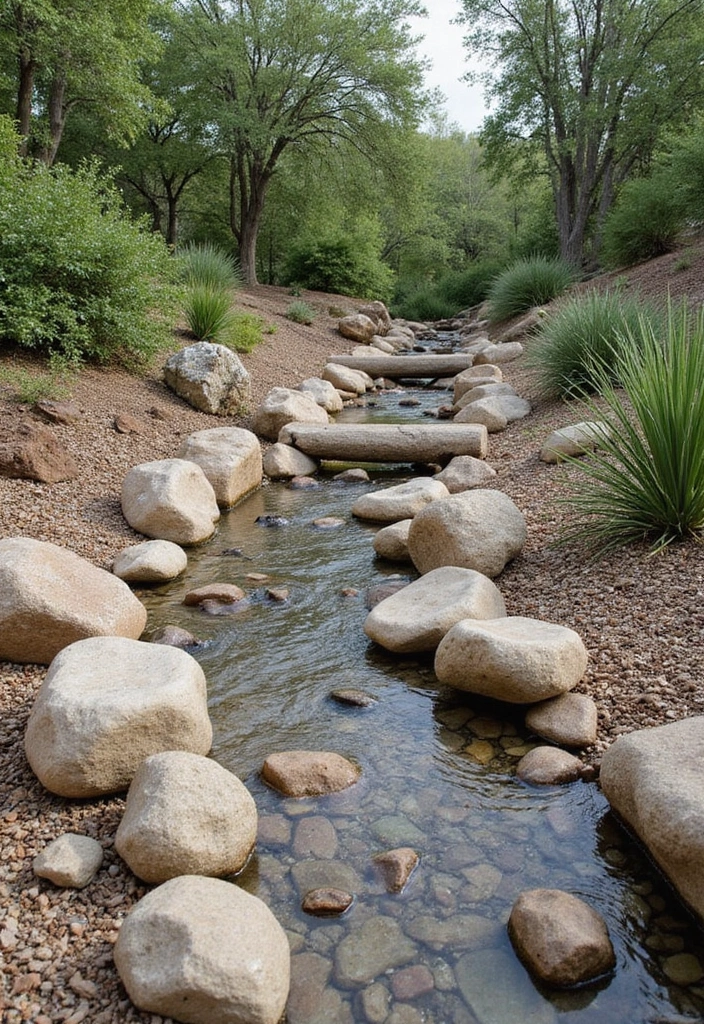
Emulate the natural beauty of a dry creek bed by using larger stones, smooth river rocks, and drought-resistant plants. This design mimics how nature arranges itself, making it both appealing and functional.
– Material Choices: Use a mix of stones and gravel to replicate the look of a flowing creek bed, allowing for good water drainage.
– Plant Varieties: Incorporate plants like sage, thrift, and sedum that thrive in rocky environments.
– Layering Techniques: Place larger stones as anchors, with smaller ones filling gaps to create movement.
– Color Variation: Use various shades of stone to develop depth and interest in the bed.
This design works great for sloped areas, providing erosion control while offering a low-maintenance landscape that seems to blend effortlessly with the surrounding environment.
7. Edible Flower Garden
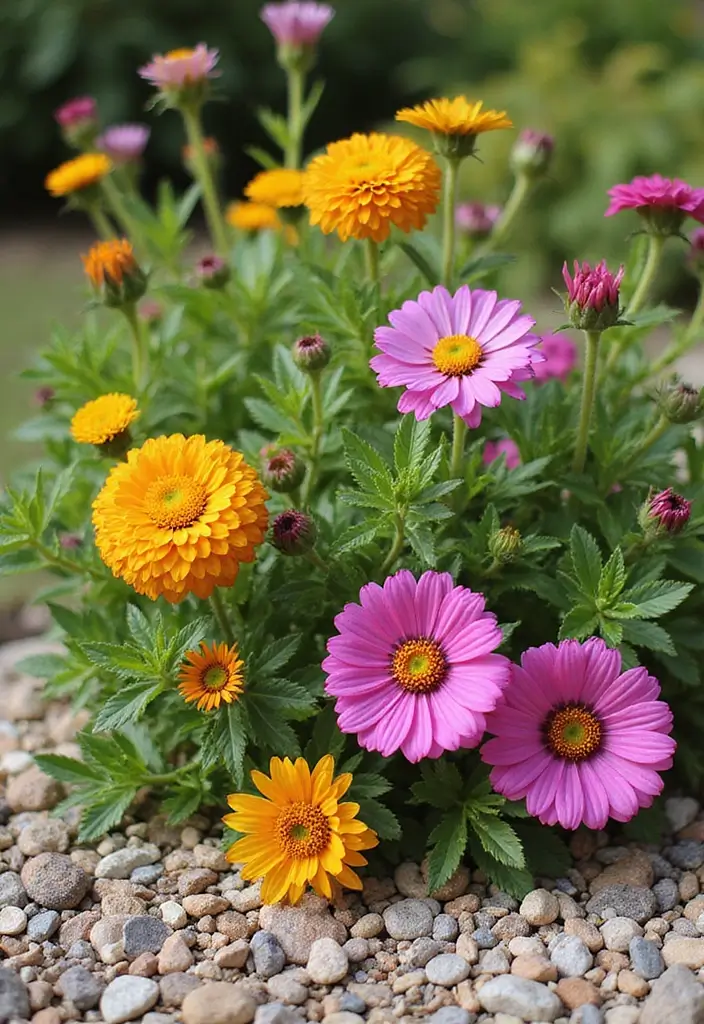
Why not combine beauty with utility? An edible flower garden nestled in gravel can be both decorative and delicious. Flowers like nasturtiums, violas, and chive blossoms bring color and flavor to your meals.
– Planting Strategy: Interplant edible flowers with traditional perennials for a visually stunning and functional garden.
– Soil Health: Ensure rich soil beneath the gravel for healthy growth and flavor-rich blooms.
– Seasonal Blooms: Choose a variety of flowers that bloom at different times to maximize visual impact and culinary enjoyment.
– Culinary Ideas: Use these flowers in salads, desserts, or as garnishes to impress your guests.
This garden not only beautifies your space but also adds a unique culinary touch, inviting creativity into your kitchen.
8. Monochrome Elegance
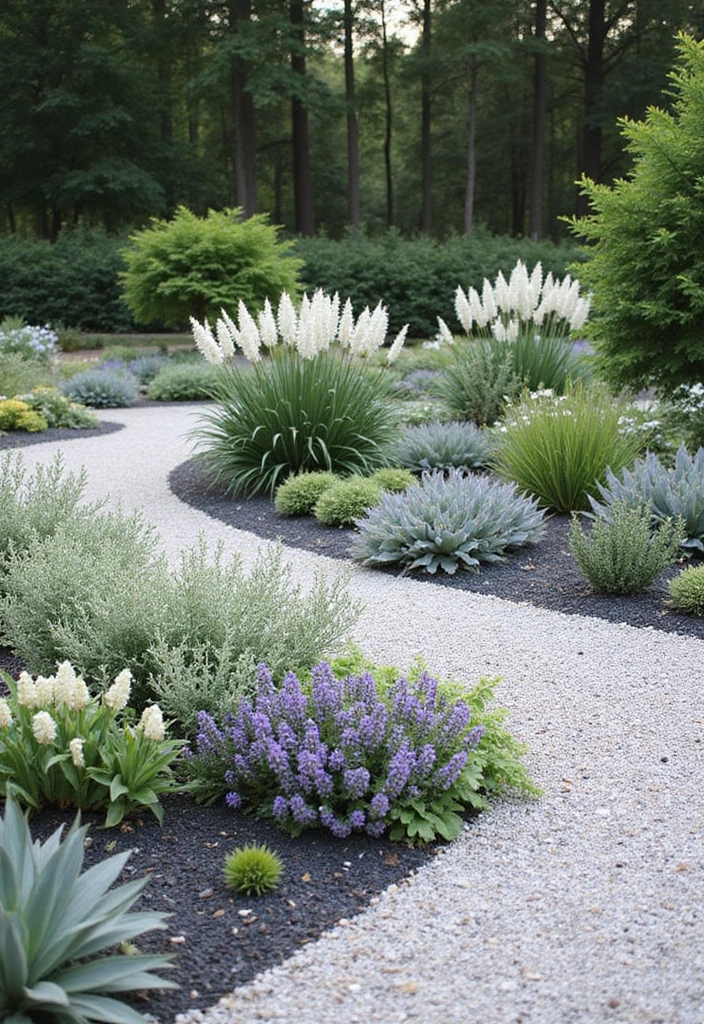
If you appreciate a more refined aesthetic, consider a monochrome gravel flower bed featuring shades of one color. For example, using various shades of white and grey can create a stunningly elegant space.
– Plant Types: Combine different plants like white daisies, lamb’s ear, and white lavender to create depth while remaining within the color scheme.
– Texture Variance: Introduce varied textures through flower types and gravel sizes for an added visual dimension.
– Gravel Choices: Use light-colored gravel to reflect sunlight, brightening your garden even on cloudy days.
– Sophisticated Accents: Consider adding white stones or sculptures to enhance the monochromatic theme.
This design is perfect for creating a calming space that feels sophisticated and intentional, with minimal upkeep required.
9. Mediterranean Escape
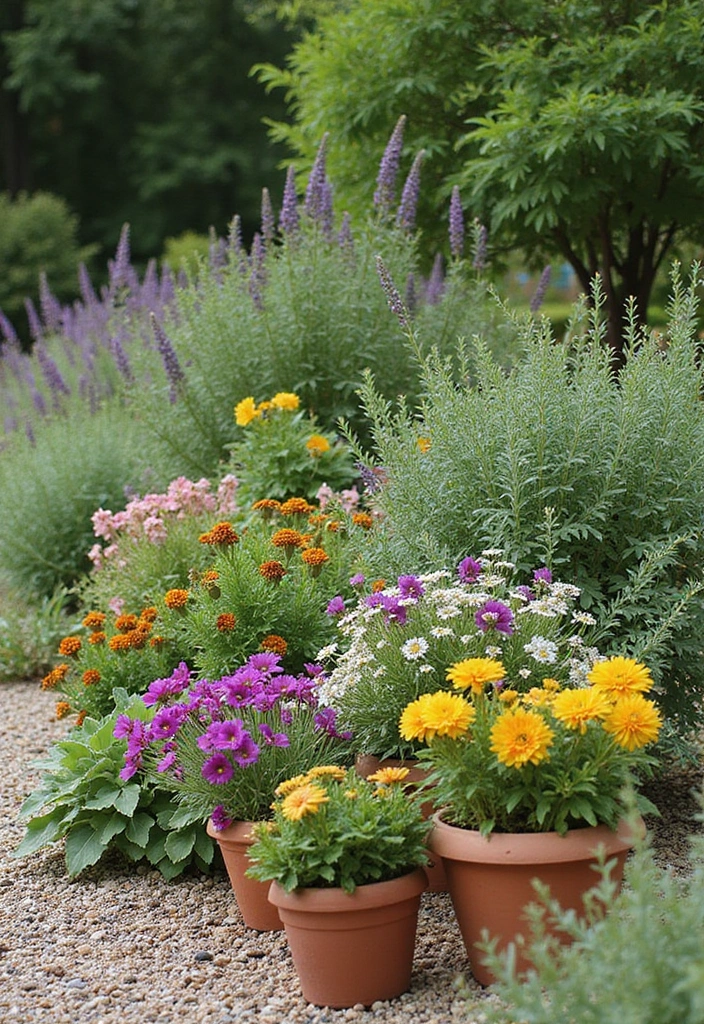
Transport yourself to the Mediterranean with a colorful gravel flower bed featuring plants like lavender, rosemary, and oleander. This design is perfect for sunny spots and brings a fragrant element to your garden.
– Plant Arrangement: Cluster plants together for a lush look while leaving space for gravel pathways.
– Decorative Elements: Add terracotta pots or rustic garden furniture to enhance the Mediterranean feel.
– Soil Tips: Amend the soil with compost to ensure the best growth for your aromatic herbs.
– Watering Needs: These plants are drought-resistant but will need occasional watering during prolonged dry spells.
This design captures the warmth and beauty of Mediterranean gardens while ensuring that maintenance remains low.
10. Vertical Garden Integration
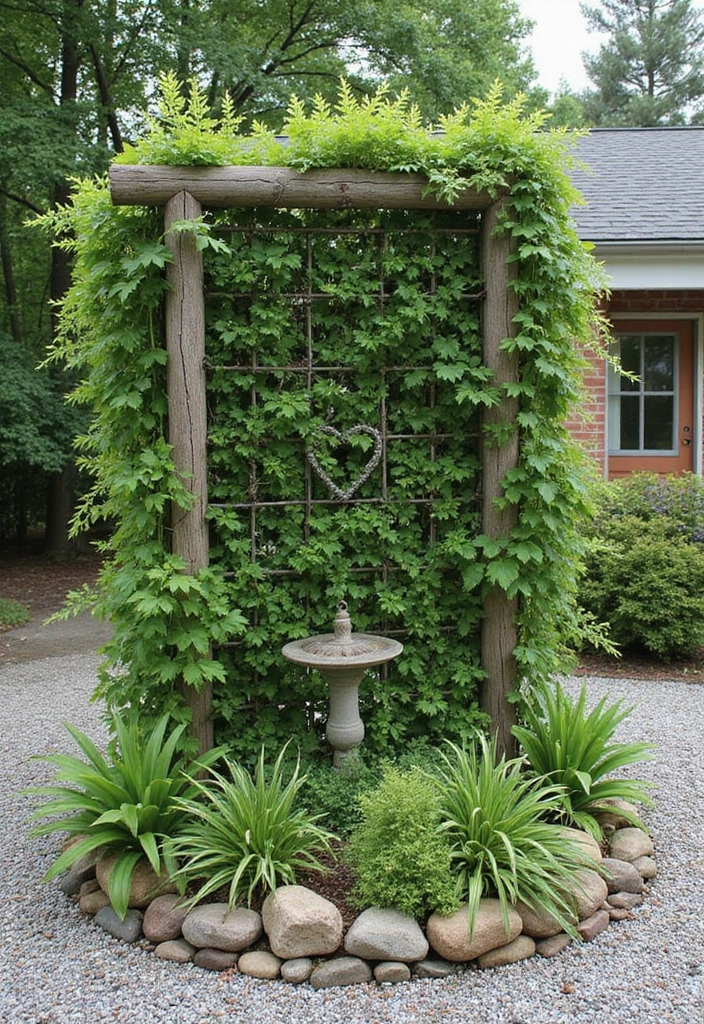
Integrate vertical gardening into your gravel flower bed for a unique and space-saving design. Using trellises or wall-mounted planters allows you to plant drought-resistant climbers like clematis, hops, or morning glory alongside a gravel base.
– Plant Support: Ensure your climbing plants have adequate support to thrive, making the most of vertical space.
– Color Play: Use a mix of colors and textures for a dynamic look; consider trailing plants that add movement to your design.
– Ease of Access: Vertical gardens make it easy to garden without bending down, which can be a huge plus for those with physical limitations.
– Design Flexibility: This style offers versatility, allowing you to alter the arrangement as plants grow.
With this approach, your garden becomes an engaging landscape that showcases your creativity while being easy to maintain.
11. Rustic Fence Backdrop
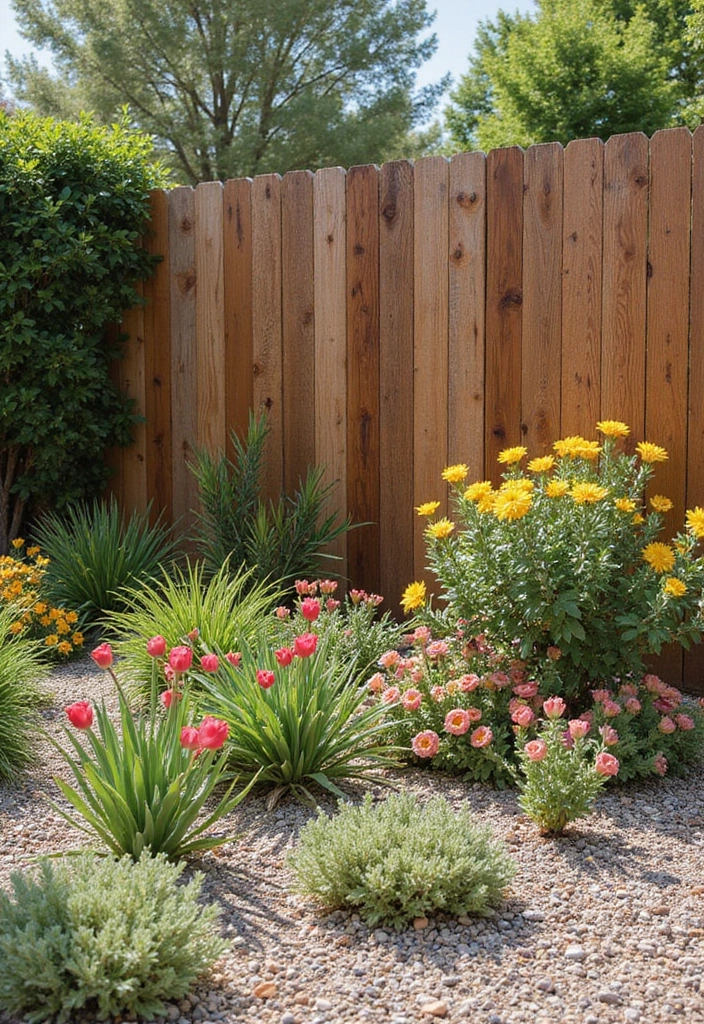
A rustic wooden fence can make a lovely backdrop for your gravel flower bed, creating a charming and homey feel. Use drought-resistant plants like sedum, aster, and lavender to create a colorful contrast against the wood.
– Color Harmony: The natural hues of wood blend beautifully with the vibrant colors of your flowers.
– Plant Layering: Use taller plants closer to the fence, gradually decreasing in height to create dimension.
– Maintenance Note: Ensure that the fence is treated to resist weathering, keeping your garden looking fresh.
– Functional Elements: Consider adding hooks or shelves to your fence for hanging planters or decorative items.
This design not only enhances the visual appeal of your garden but also provides a sense of separation and privacy.
12. Themed Color Schemes

Create a gravel flower bed emphasizing a specific theme through color schemes. Choose a palette—be it pastel, jewel tones, or even a black and white scheme—and select your plants accordingly.
– Thematic Plants: For a pastel garden, consider pansies, delicate grasses, and baby’s breath. For jewel tones, mix dahlia, asters, and sunflowers.
– Gravel Coordination: Select gravel that complements your color choice—pastel shades near the blooms will create an ethereal look.
– Seasonal Changes: As flowers fade, the gravel will maintain a visually appealing base.
– Visual Interest: Use larger boulders as focal points to enhance the themed design.
This approach adds a personal touch to your garden, making it a reflection of your style while being easy to manage.
A well-themed gravel flower bed can transform your outdoor space into a captivating canvas. Choose your colors wisely—pastels for a soft touch or jewel tones for a vibrant pop, and watch your garden come alive!
13. Butterfly Haven
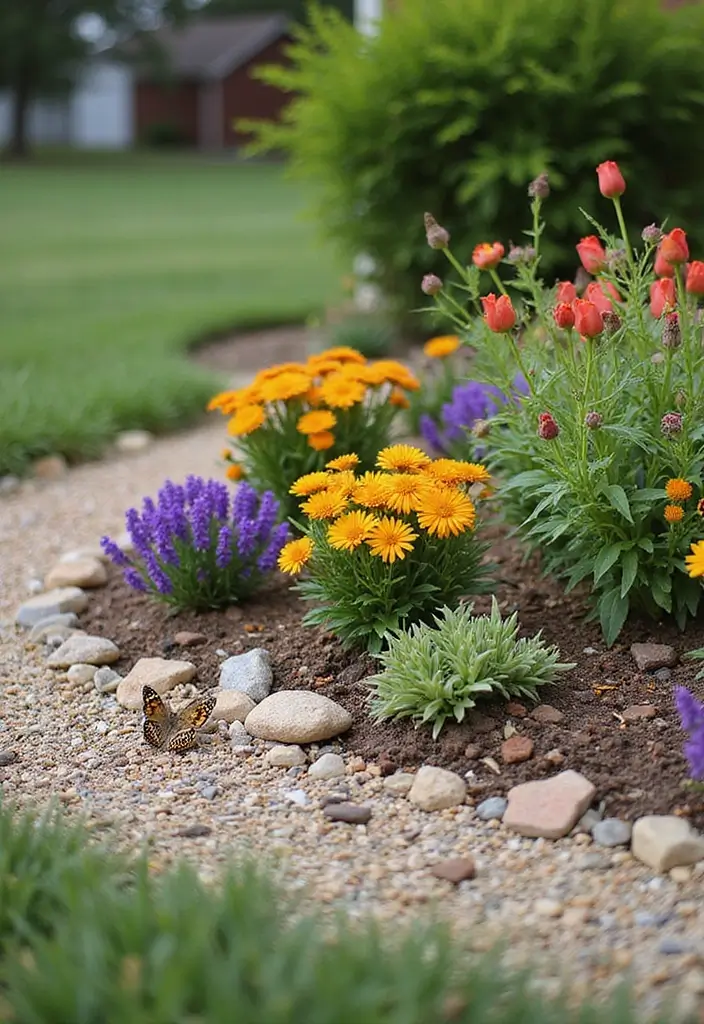
Create a butterfly-friendly gravel flower bed that not only looks stunning but supports local wildlife. Use plants that attract butterflies such as milkweed, monarda, and coneflower nestled in decorative gravel.
– Planting Strategy: Arrange flowers in groups to attract butterflies, ensuring there is enough nectar-rich blooms throughout the season.
– Color Palette: Include a variety of colors to create an engaging habitat that is visually interesting.
– Maintenance Tips: Remove weeds promptly, and consider adding some shallow water sources to attract butterflies.
– Wildlife-Friendly Add-Ons: Include rocks and logs where butterflies can rest and bask in the sun.
This garden not only brightens your space but also encourages biodiversity, making your outdoor area a haven for these beautiful creatures.
14. Family-Friendly Design
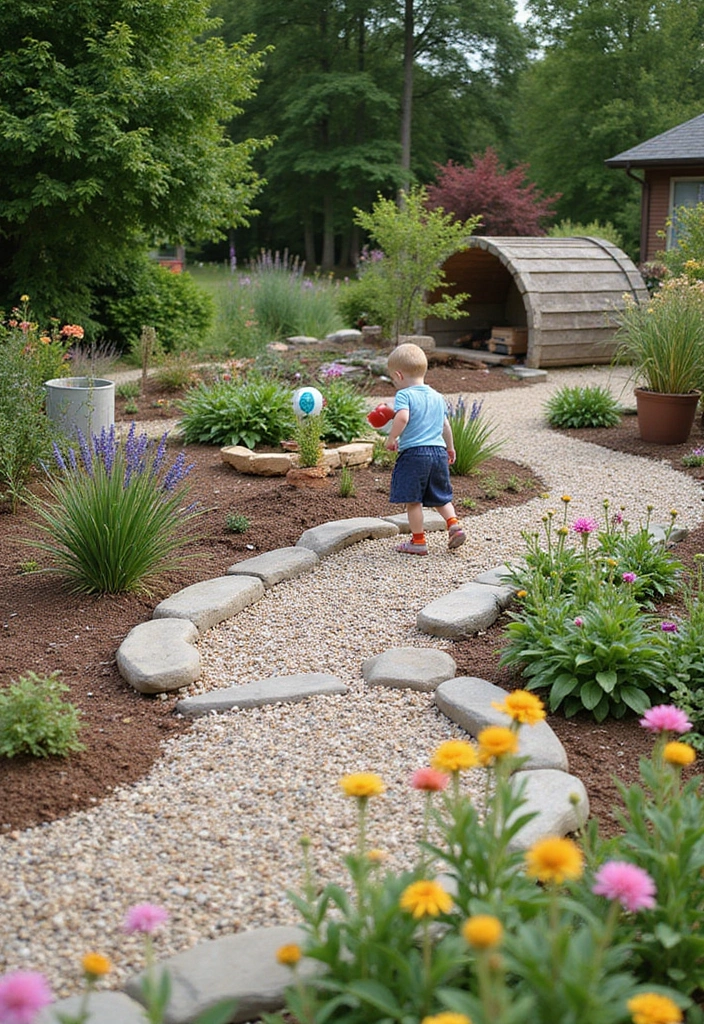
Designing a gravel flower bed that is family-friendly can create an inviting space for both adults and kids. Use durable and low-maintenance plants that can withstand some wear and tear, like pansies, calendula, and marigolds.
– Pathway Consideration: Create pathways with larger gravel to allow for easy access and to minimize mess.
– Interactive Elements: Consider adding stepping stones or garden art that kids can interact with for a playful touch.
– Durable Plants: Choose blooms that can handle being touched or picked without wilting quickly.
– Educational Opportunities: Use this garden to teach children about plants and nature, fostering a love for gardening from an early age.
This design creates a welcoming atmosphere where everyone can enjoy the beauty of nature while ensuring easy maintenance.
15. Wildlife Habitat
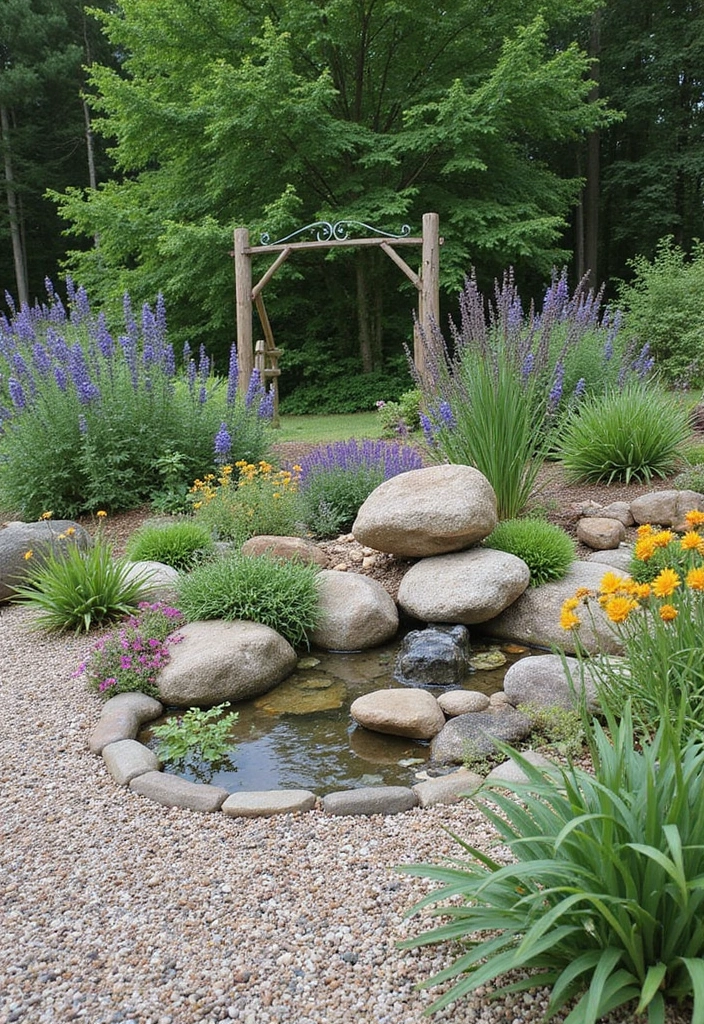
Create a gravel flower bed designed to support local wildlife, including birds, bees, and beneficial insects. Use a variety of plants such as sunflowers, wildflowers, and native grasses that provide food and shelter.
– Diverse Plant Selection: Incorporate a mix of perennials and annuals for year-round support to wildlife.
– Natural Elements: Add native rocks and logs that serve as shelters for small creatures while enhancing the natural look of the garden.
– Water Features: Consider introducing small water elements, such as birdbaths, which can draw wildlife to your space.
– Sustainable Practices: Avoid pesticides to maintain a healthy ecosystem, allowing beneficial insects to thrive.
This design promotes a biodiverse environment while simultaneously being low-maintenance, rewarding you with a vibrant garden filled with activity.
16. Slope Stabilization

Utilize gravel flower beds to aid in slope stabilization while enhancing your garden’s beauty. This design can incorporate a variety of drought-resistant plants that help prevent erosion, such as groundcovers and ornamental grasses.
– Layering Technique: Build terraces with gravel for a more structured look while providing stability for plants.
– Plant Selection: Use hardy plants like creeping thyme and sedum that can grip the soil and survive harsh conditions.
– Drainage Consideration: Ensure proper drainage channels within the gravel to redirect water runoff effectively.
– Aesthetic Appeal: Mixing various gravel sizes can create a visually appealing look while providing practical benefits.
This design helps to manage landscaping challenges while providing a beautiful, low-maintenance garden space.
17. Colorful Container Accents
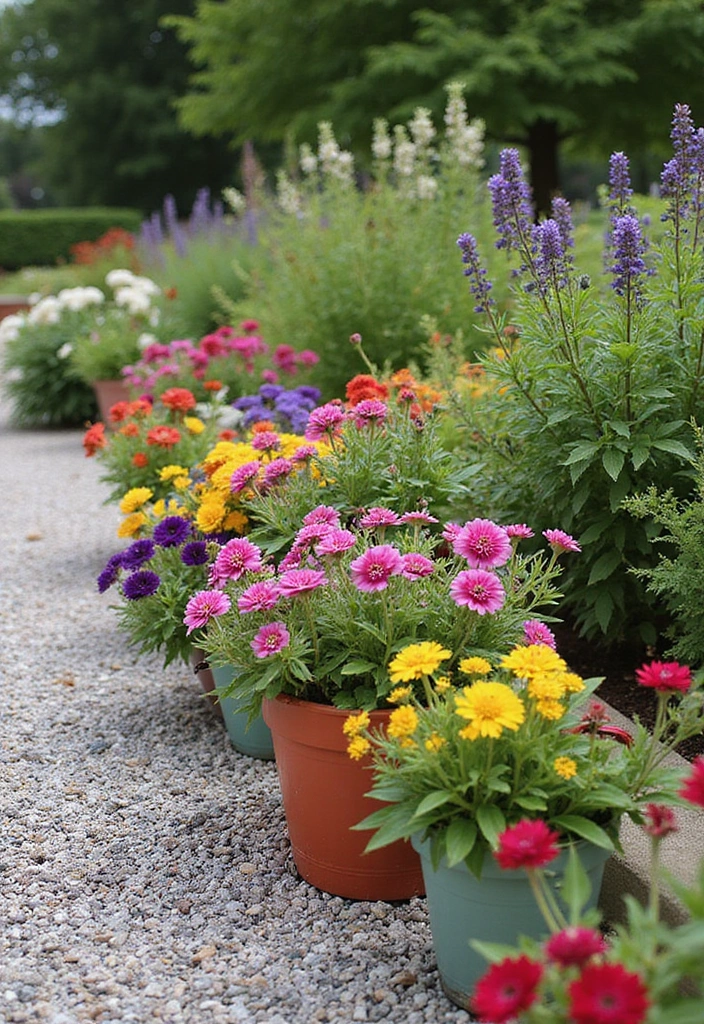
Incorporate colorful containers within your gravel flower bed to add dimension and interest. Use pots filled with vibrant flowers or herbs placed strategically among the gravel to create a visually appealing scene.
– Container Choices: Opt for colorful ceramics or rustic wooden boxes that complement your style.
– Plant Combinations: Fill containers with a mix of edible and ornamental plants for an attractive yet functional garden display.
– Maintenance Tips: Ensure pots have drainage holes to prevent waterlogging and promote healthy growth.
– Seasonal Rotations: Swap out seasonal plants in containers for continuous color and interest throughout the year.
This playful addition to your gravel flower bed can easily add a burst of color and character to your outdoor space.
18. Seasonal Blooming Strategy
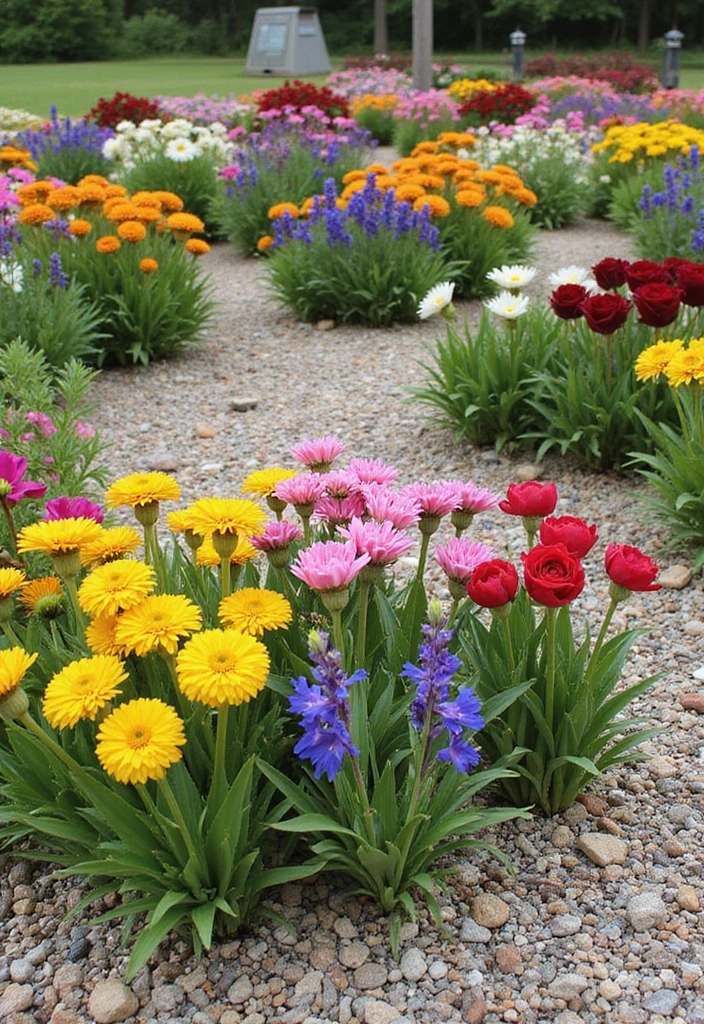
Plan your gravel flower bed to thrive through all seasons by selecting a variety of plants that bloom at different times. This thoughtful approach keeps your garden visually appealing year-round, featuring selections like daffodils in spring and chrysanthemums in fall.
– Overlapping Bloom Times: Choose plants that bloom together for a vibrant display and those that stagger to ensure continuous color.
– Soil Preparation: Ensure good soil quality beneath the gravel to support diverse plant needs.
– Visual Layers: Consider plants of varying heights and textures to create depth and interest.
– Seasonal Maintenance: Regularly deadhead spent blooms to keep your garden looking tidy throughout the seasons.
This strategy not only beautifies your space but also ensures for a manageable garden, requiring minimal maintenance while showcasing nature’s wonders.
19. Shade-Loving Plants in Gravel
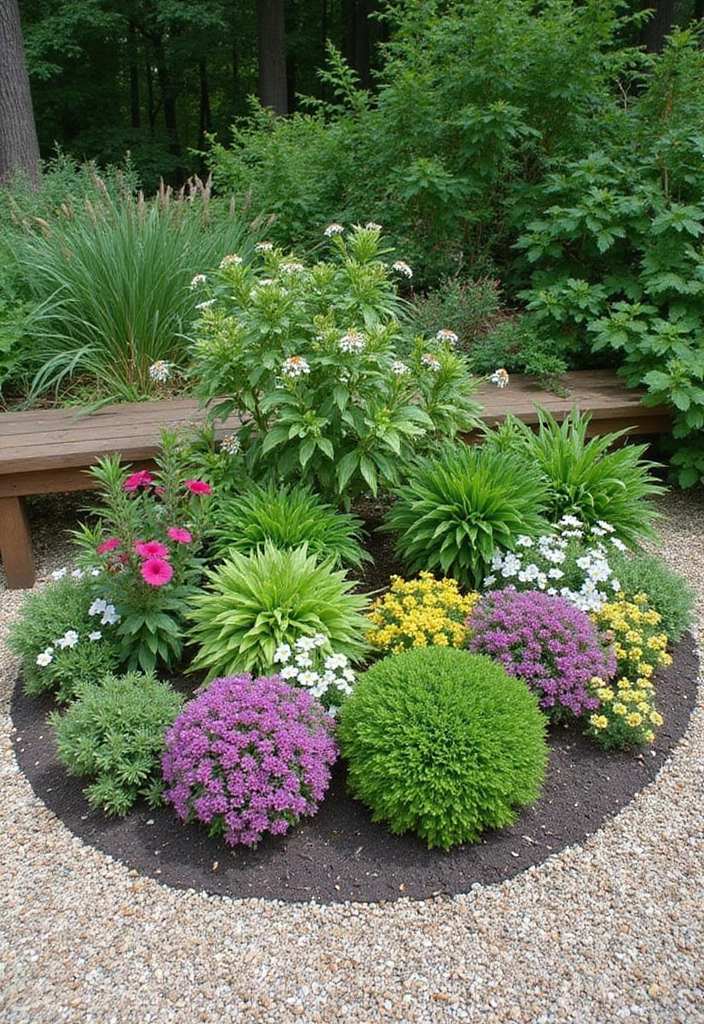
Don’t forget those shaded areas! Gravel flower beds can also be designed to support shade-loving plants that thrive without direct sunlight. Plants like hostas, fuchsias, and heuchera can flourish in these spaces, giving life to spots often overlooked.
– Plant Arrangement: Group plants based on their shade requirements and sizes to create visual harmony.
– Gravel Color Choice: Use lighter-colored gravel to brighten up shady areas, making them feel more inviting.
– Focal Points: Add in decorative stones or sculptures to draw the eye and add interest to your shady garden.
– Maintenance Tips: Keep an eye on moisture levels, as sheltered areas can retain more water than sunny spots.
This design proves that even shaded areas can be transformed into beautiful gravel flower beds with color and texture.
20. Coastal Cottage Vibes
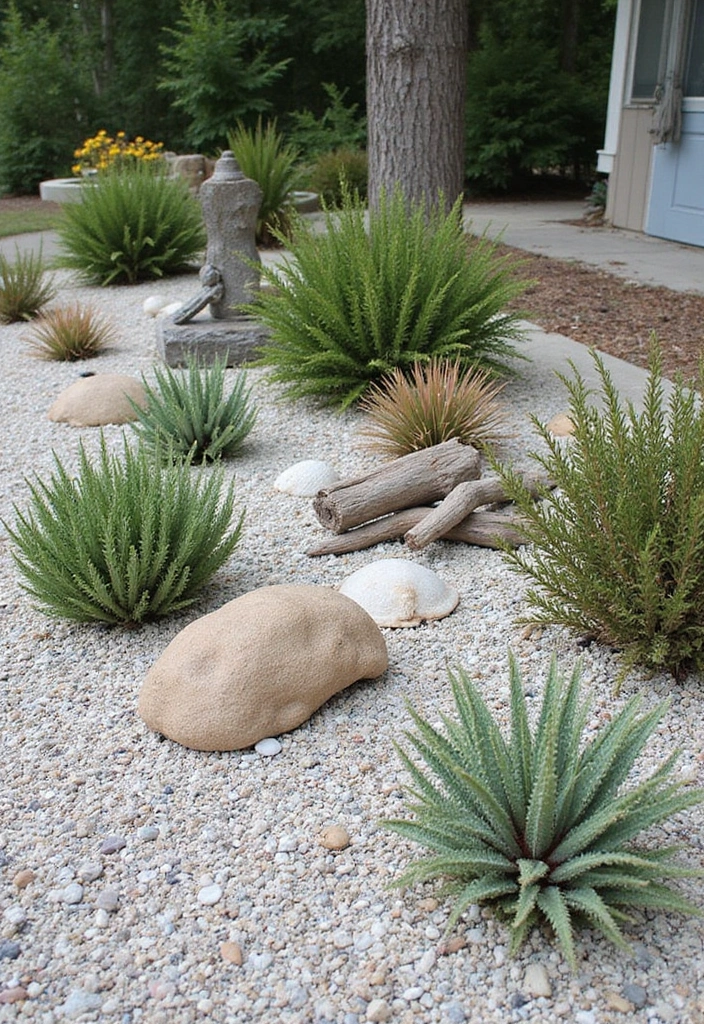
Bring the relaxed vibes of a coastal cottage to your garden with a gravel flower bed featuring beachy plants like sea oats, beach strawberry, and lavender. Their resilience against salt and wind makes them perfect for a coastal-inspired design.
– Plant Placement: Arrange plants in casual clusters to mimic the natural growth found along the shoreline.
– Gravel Selection: Choose light-colored sand or small pebbles that reflect the look of beach surroundings.
– Pathway Design: Create winding paths using wider gravel to lead visitors through your coastal escape.
– Decorative Elements: Incorporate driftwood or seashells for natural accents that tie the theme together.
This design encapsulates the essence of a coastal retreat while ensuring easy care and drought resistance.
21. Formal Symmetry
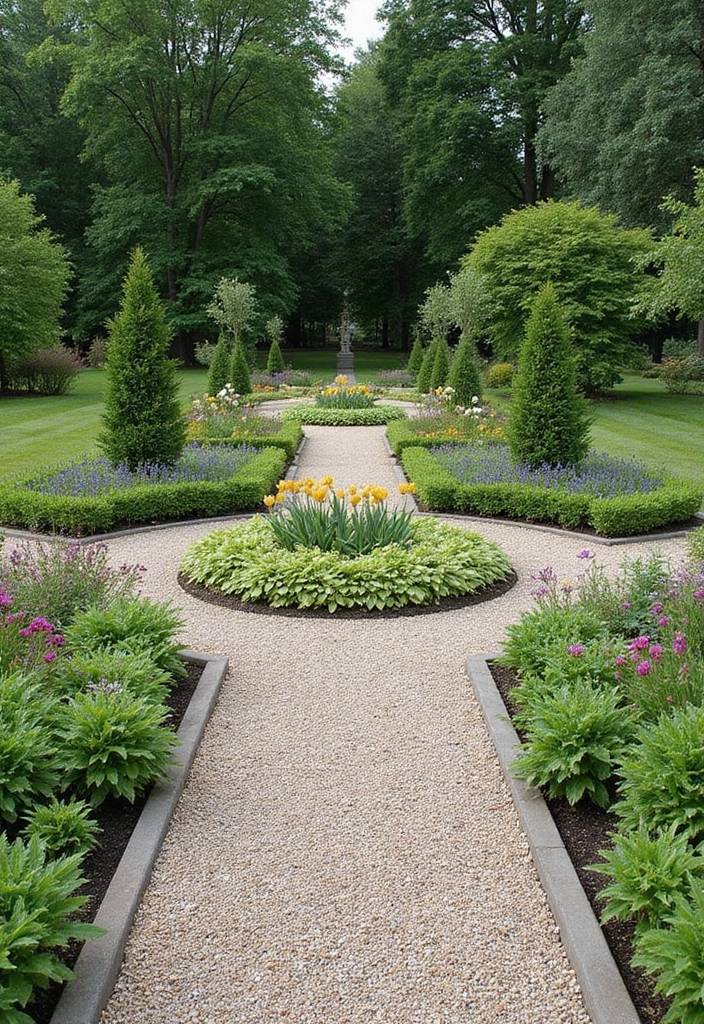
For those who appreciate order and elegance, a formal symmetrical gravel flower bed design can create a neat and sophisticated look. Use structured plants like boxwoods, hydrangeas, and lavender planted in precise arrangements.
– Design Layout: Keep a balanced layout with equal plant distribution on either side, creating harmony.
– Gravel Types: Opt for larger gravel on the perimeter and finer gravel inside for texture contrast.
– Accent Features: Include symmetrical pathways or urns to enhance the formal appeal.
– Care Tips: Regular pruning and shaping of hedges ensure that your garden maintains its elegant form.
This design combines beauty and structure, allowing for a stunning garden that remains easy to care for and visually striking.
22. Colorful Perennial Borders
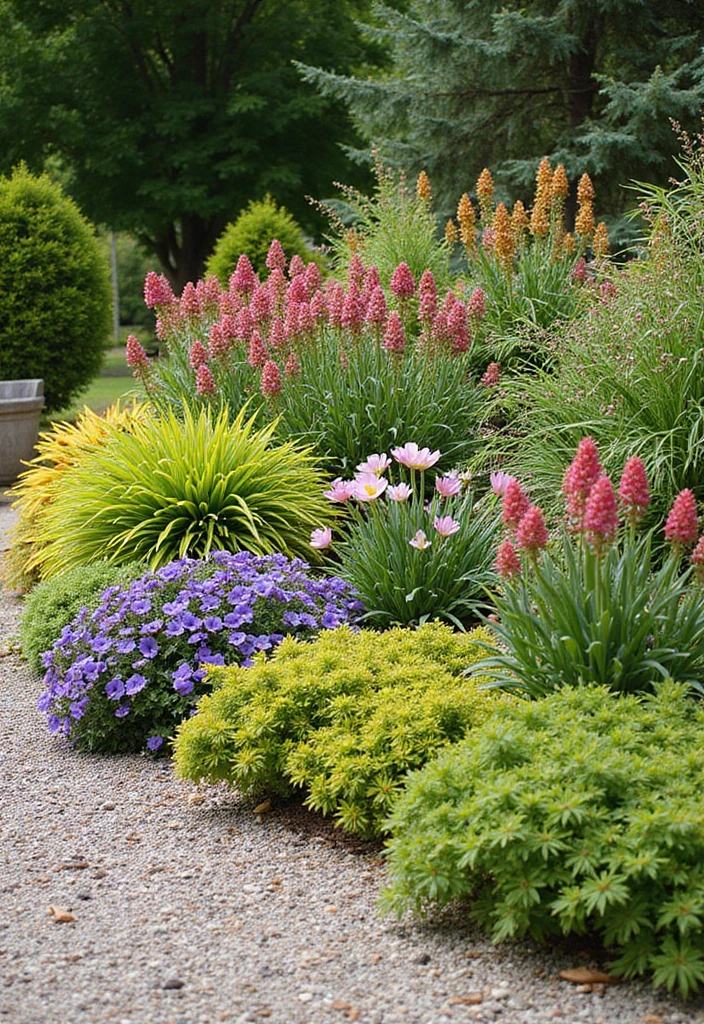
Enhance the beauty of your gravel flower bed by incorporating colorful perennial borders. Plants like daylilies, phlox, and coreopsis provide vibrant colors that last for years.
– Plant Sizing: Choose taller perennial plants for the back of the bed, gradually transitioning to shorter ones in the front for depth.
– Bloom Timing: Opt for various plants that bloom at different times to enjoy continuous color throughout the growing season.
– Soil Preparation: Use quality topsoil under the gravel to promote healthy root growth for your perennials.
– Maintenance Strategy: Regular deadheading can stimulate new blooms and keep your garden looking fresh.
This design fosters a stunning and colorful landscape that requires minimal effort over time while continuously rewarding you with beauty.
23. Scented Garden Retreat
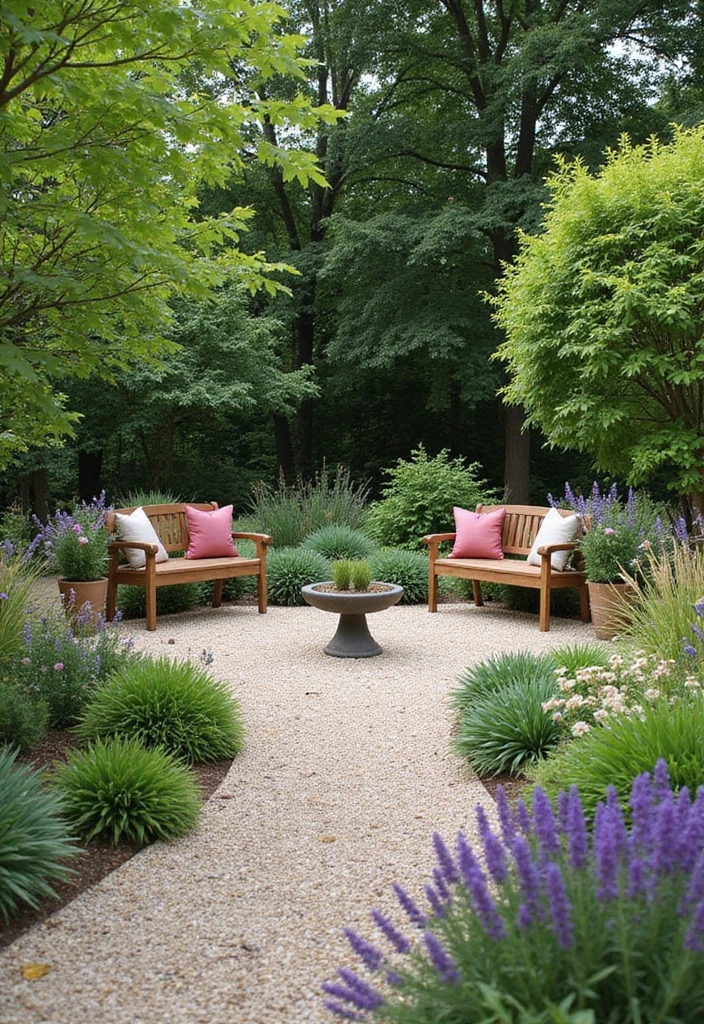
Create a soothing scented garden retreat using fragrant drought-resistant plants like jasmine, rosemary, and lavender. Their delightful aromas can transform your garden into a sensory haven.
– Plant Placement: Position aromatic plants throughout the gravel bed, ensuring easy access to enjoy their scents.
– Layering Strategy: Use low-growing plants at the forefront with taller varieties behind to create layers of fragrance.
– Care Consideration: Regularly trim foliage to encourage new growth and enhance fragrance levels.
– Relaxation Areas: Consider adding a bench or seating area for enjoying your newly fragrant garden.
This design combines beauty and sensory appeal, creating a tranquil retreat that’s both low-maintenance and delightful.
Transform your gravel flower bed into a fragrant retreat! With the right placement of jasmine, rosemary, and lavender, you’ll create a sensory haven that’s not just beautiful, but low maintenance too.
24. Herb Spiral Design
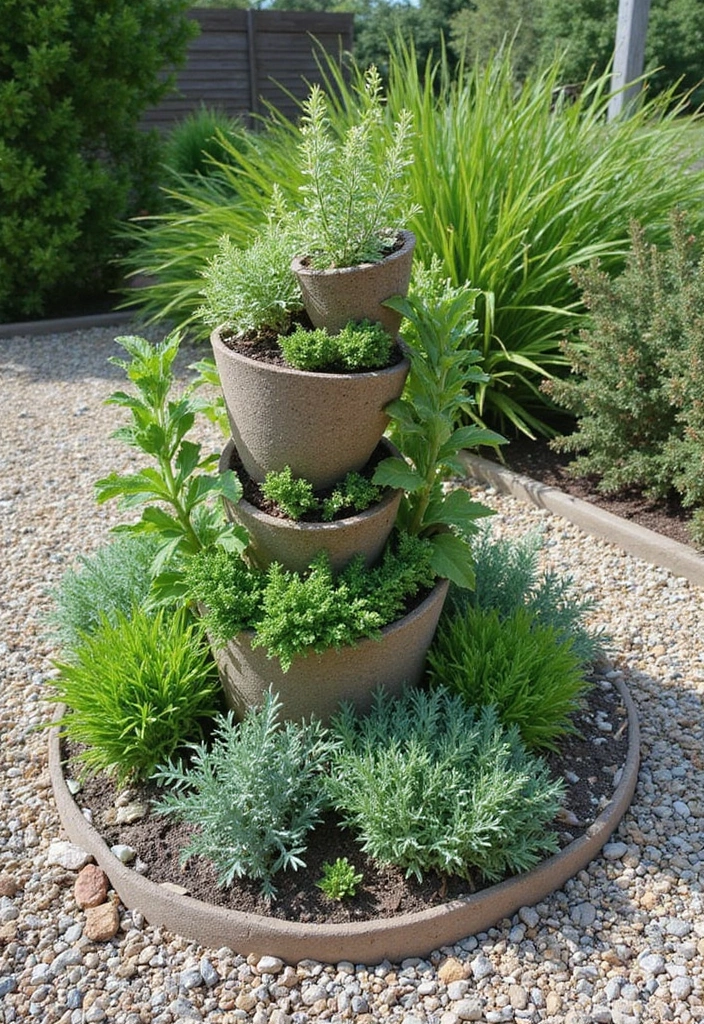
Introduce an innovative herb spiral in your gravel flower bed for both aesthetics and functionality. This vertical design allows for various herbs to grow in a small footprint, using drought-resistant plants like thyme, oregano, and sage.
– Spiral Construction: Build a spiral out of rocks or bricks, filling with well-draining soil and gravel to support the herbs.
– Plant Arrangement: Plant herbs according to their sun and water needs, with the top being drier and the base retaining moisture.
– Seasonal Rotation: Change up plantings seasonally to enjoy a variety of herbs throughout the year.
– Access Points: Ensure the gravel around the spiral allows easy access for harvesting.
This unique design offers a blend of beauty and utility, ensuring that your herbs are both accessible and visually pleasing.
25. Creative Edging Ideas

Add character to your gravel flower bed with creative edging options that define borders and complement your overall design. Use materials like reclaimed wood, bricks, or natural stones to create a boundary for your plants.
– Material Selection: Choose materials that resonate with your garden’s overall aesthetic, whether rustic or modern.
– Design Variations: Consider curved edges for a softer look or sharp lines for a contemporary feel.
– Functional Benefits: Edging helps to keep gravel contained and prevent weeds from encroaching into your flower bed.
– Visual Interest: Incorporate unique shapes and patterns in your edging to create visual intrigue.
This design elevates your gravel flower bed, giving it a polished and intentional appearance, while making maintenance easier.
26. Drought-Tolerant Ground Covers
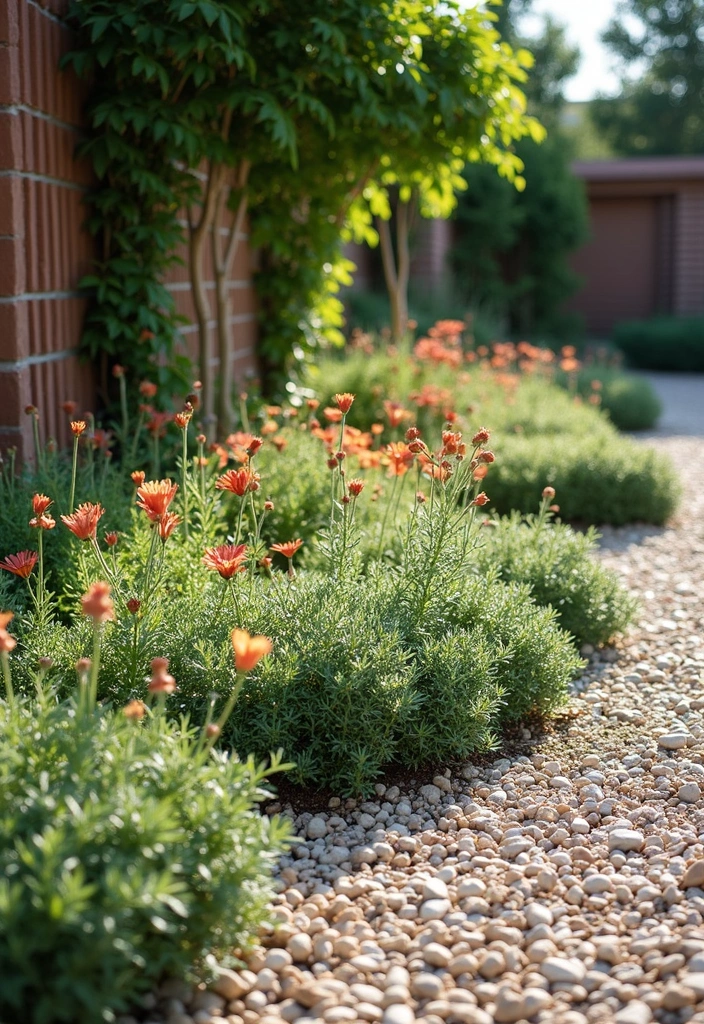
Consider using drought-tolerant ground covers in your gravel flower bed to create a low-maintenance, lush look. Plants like creeping thyme, sedum, and stonecrop can fill open spaces beautifully.
– Planting Strategy: Use these ground covers to fill in gaps between larger plants, creating a seamless landscape.
– Soil Consideration: Ensure well-draining soil beneath the gravel, as roots can thrive better in drier conditions.
– Visual Appeal: Choose ground covers with different textures and shades to create visual interest.
– Maintenance Notes: Minimal trimming and watering will keep your ground covers looking great throughout the growing season.
This design offers a sustainable approach to landscaping while providing a beautiful cover that requires little attention.
27. Ornamental Grass Showcase
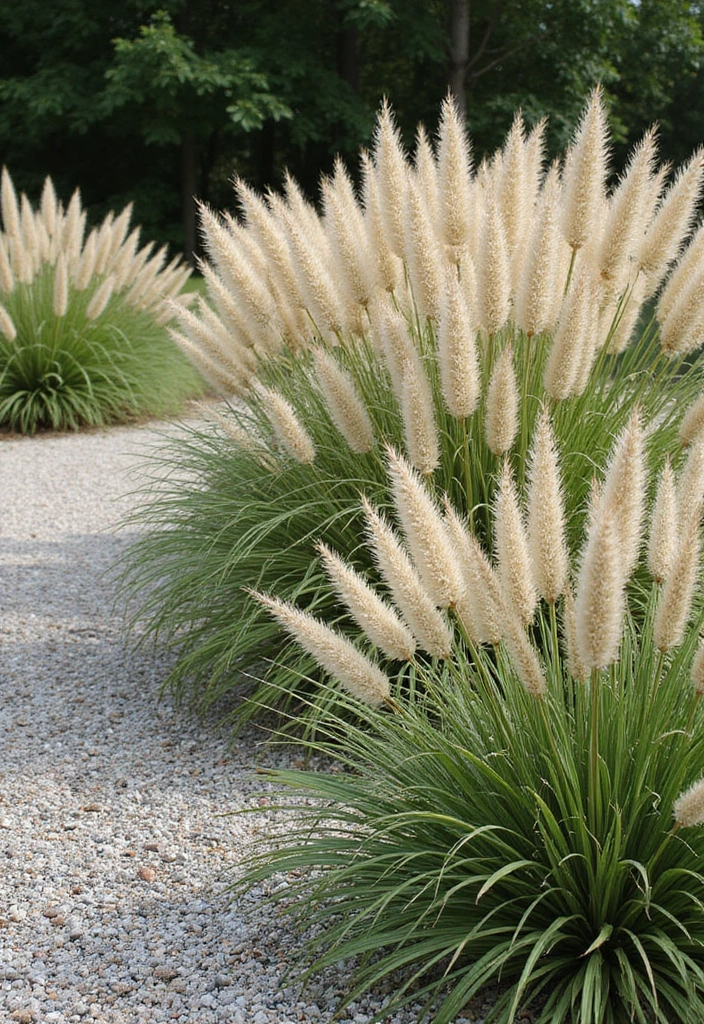
Create a stunning gravel flower bed by featuring ornamental grasses that add movement and texture to your garden. Grasses like feather reed grass, blue oat grass, and Japanese blood grass can thrive in gravel while providing an elegant look.
– Plant Placement: Use taller grasses as focal points, arranging shorter ones to create layers and increase interest.
– Seasonal Changes: Ornamental grasses shift in color and form with the seasons, ensuring visual appeal year-round.
– Care Strategy: Minimal maintenance is required; simply trim back in late winter before new growth begins.
– Visual Features: Combine grasses with flowering plants for contrast and added beauty.
This design captures the essence of movement in the garden while being entirely low-maintenance, a perfect combination for any gardener.
Transform your garden with ornamental grasses! These low-maintenance beauties not only thrive in gravel but also bring movement and texture, making every season a visual delight.
28. Low-Water Succulent Display
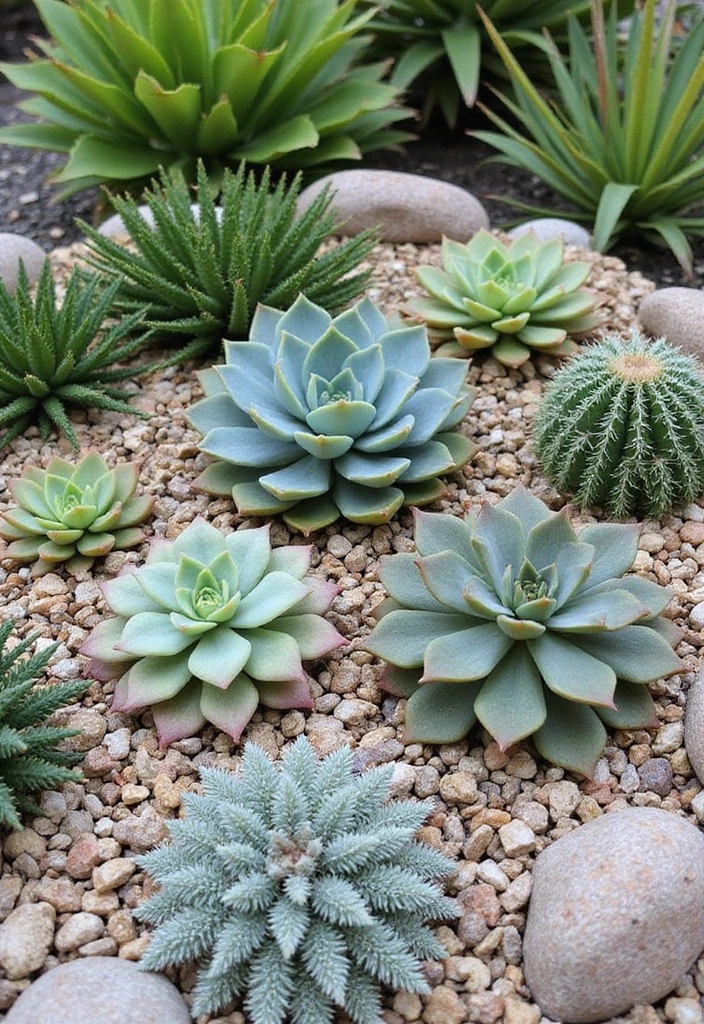
Succulents are a perfect choice for adding a splash of color and texture to a gravel flower bed without requiring much water. Utilize various types like hens and chicks, jade plant, and eclectic echeveria to create an eye-catching display.
– Design Techniques: Cluster succulents by type or color for a cohesive look that draws attention.
– Soil Health: Provide well-draining soil mixed with gravel to prevent rot.
– Maintenance Tips: Water sparingly, as most succulents thrive on neglect, and remove any dead leaves promptly.
– Decorative Options: Add rocks or driftwood for texture and create a more naturalistic setting.
This design not only looks fabulous but also embodies the principles of low-water and low-maintenance gardening beautifully.
29. Interactive Garden Features
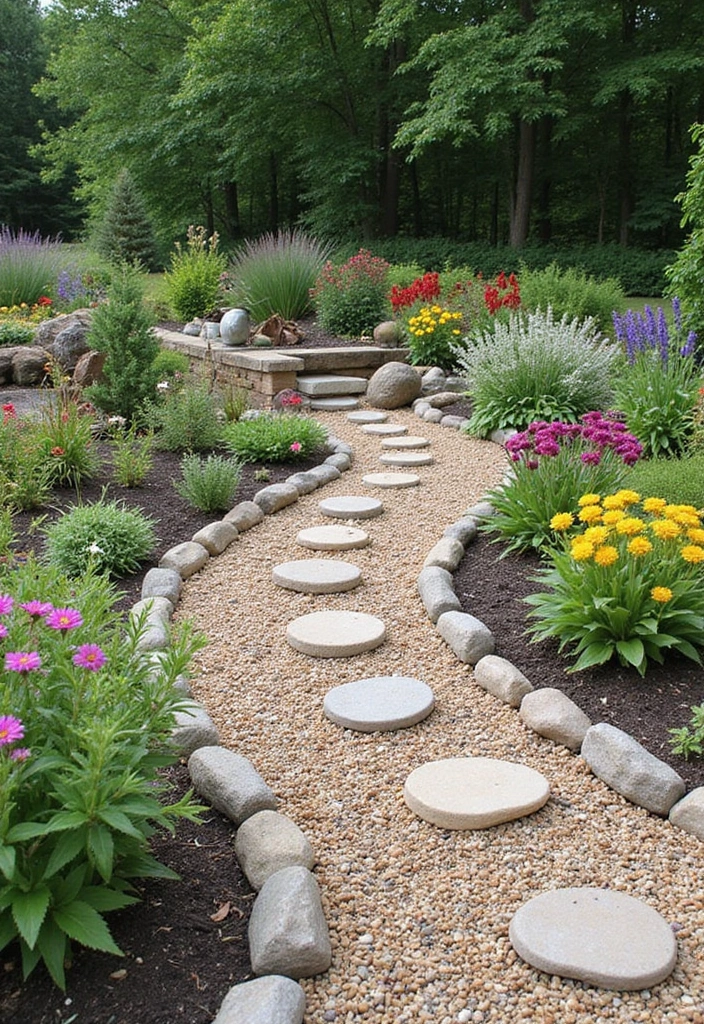
Incorporate interactive elements into your gravel flower bed to engage the senses and delight visitors. Features like stepping stones, garden art, or water features can breathe life into your outdoor space.
– Design Integration: Ensure interactive elements blend well with your gravel and plants for a cohesive look.
– Engaging Accents: Choose colorful garden art or whimsical sculptures that evoke joy and curiosity.
– Water Features: Small fountains or birdbaths can attract wildlife while adding a calming effect.
– Seasonal Adjustments: Rotate decorative elements seasonally for ongoing interest.
This design encapsulates fun and creativity while remaining easy to maintain, allowing you to enjoy your garden on multiple levels.
30. Urban Gardening Solutions
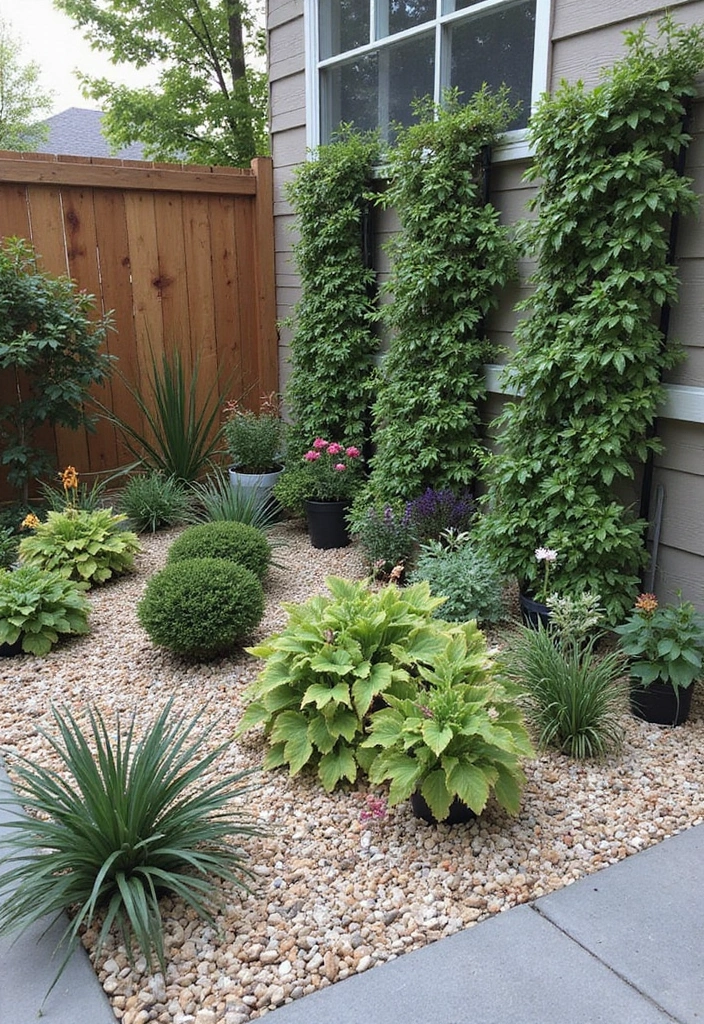
For city dwellers, gravel flower beds can be a practical yet beautiful way to enhance small outdoor spaces. Incorporating plants like chives, marigolds, and heuchera can make the most of limited room while providing visual delight.
– Space Management: Use vertical gardening techniques to maximize space, incorporating wall planters or hanging pots.
– Gravel Efficiency: Select gravel that retains some moisture but drains well to suit urban conditions.
– Design Considerations: Use compact and low-maintenance plants that won’t overgrow small areas.
– Aesthetic Touches: Consider decorative rocks or urban art pieces to personalize your garden.
This design is not only an effective use of space but also provides a beautiful escape in the urban jungle, requiring minimal upkeep while offering maximum enjoyment.
Conclusion
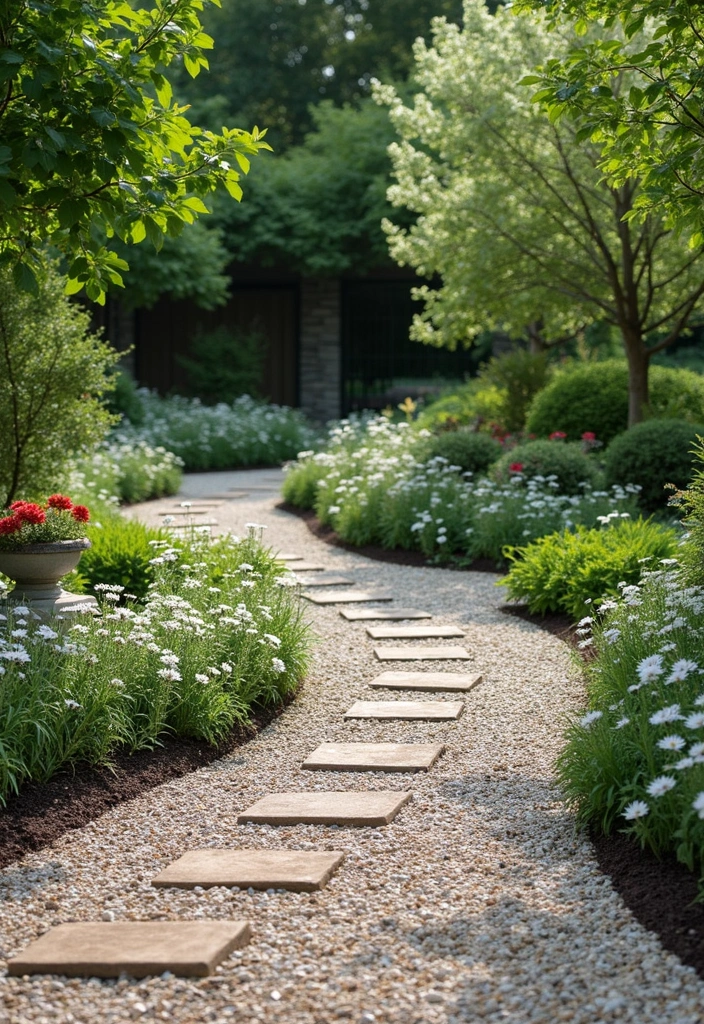
Gravel flower beds offer an incredible combination of beauty and practicality, perfect for any gardener looking to create a stunning landscape without the hassle. From drought-resistant plants to creative designs, these ideas focus on low maintenance while offering endless possibilities for personalization.
Whether you’re enhancing a large yard or a small urban space, these gravel flower bed concepts can transform your outdoor areas into vibrant retreats. So, roll up your sleeves and start planning your low-maintenance garden masterpiece!
Frequently Asked Questions
What Are the Best Drought-Resistant Plants for Gravel Flower Beds?
When designing a gravel flower bed, you’ll want to choose plants that thrive in dry conditions. Some excellent options include succulents like agave and aloe vera, as well as ornamental grasses such as feather reed grass. These plants not only require minimal water but also add beauty and texture to your garden!
Additionally, consider lavender and sedum for their fragrant blooms and low maintenance needs.
How Do I Maintain a Gravel Flower Bed?
One of the great things about gravel flower beds is their low maintenance nature! To keep yours looking its best, focus on a few key tasks. Regularly check for weeds and remove them as soon as they appear to prevent them from taking over. You can also refresh the gravel every couple of years to maintain its appearance.
Occasional watering during dry spells will help your plants thrive, especially if you’ve included drought-resistant varieties, which will need less attention!
Can I Use Decorative Gravel Options in My Flower Bed Design?
Absolutely! Using decorative gravel can elevate the aesthetic of your flower bed while providing functionality. Consider options like colored pebbles, crushed stone, or river rocks to create unique designs. These materials not only enhance the look of your garden but also help with drainage and weed suppression, making them ideal for low maintenance gardening!
Feel free to mix different types of gravel for a more dynamic look!
What Are Some Creative Flower Bed Design Tips for Gravel Gardens?
Get ready to unleash your creativity! When designing a gravel flower bed, think about incorporating color-blocking techniques by grouping plants of similar colors together. You could also create a themed garden, like a butterfly haven or a scented retreat with fragrant plants.
Using vertical gardening elements, such as trellises or wall-mounted planters, can save space and add dimension to your design. Don’t hesitate to experiment with different layouts and plant combinations for a truly personalized garden!
How Can I Incorporate Edible Plants into My Gravel Flower Bed?
Why not enjoy the best of both worlds by incorporating edible plants into your gravel flower bed? Plants like nasturtiums and chives not only look beautiful but are also delicious additions to your meals!
Plan your layout to include these functional plants among your decorative ones, creating a stunning yet practical garden. By selecting drought-resistant varieties, you can ensure they thrive with minimal maintenance, providing a feast for both the eyes and the palate!

